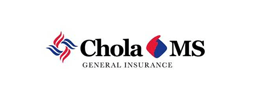Last updated on: September 19, 2025
The health insurance claim process involves several key steps to ensure that medical expenses are covered by an insurance provider. Initially, when a policyholder receives medical services, they or the healthcare provider must submit a claim to the insurance company, detailing the services received and their costs. This submission can be done electronically or via paper forms, depending on the insurer’s requirements. The insurance company then reviews the claim to verify the policy coverage, assess the medical necessity of the services, and check for any errors or incomplete information. Upon approval, the insurer calculates the payable amount based on the policy terms and any applicable deductibles or co-pays, and then reimburses either the policyholder or directly pays the healthcare provider. If a claim is denied, the policyholder can appeal the decision by providing additional documentation or clarification, following the insurer’s appeals process.
Health insurance provides a financial bailout against sudden health costs. Yet merely holding a health policy is insufficient — it is imperative to comprehend the claim process so that assistance arrives promptly at the moment you need it most. This is a guide that decodes the kinds, procedures, and suggestions to manage the health insurance claims procedure in India.
Health insurance claim refers to a written request of an insured person on an insurance company to pay the cost of treatment as stipulated by the policy. Either it can be processed on a cashless basis—with the insurer covering the hospital directly—or through reimbursement, in which you pay first and then receive reimbursement from the insurer.
You will be surprised to learn:
In 2020, the penetration of health insurance in India was still low at 37 percent, which means that there is an increasing awareness.
| Type | Description |
|---|---|
| 1. Cashless Claim | The insurer settles the medical bills directly with a network hospital. |
| 2. Reimbursement Claim | The insured pays the bills upfront and later gets reimbursed. |
Know Your Policy
Familiarise yourself with your policy’s inclusions and exclusions, the coverage limits, the waiting periods, and the hospitals in its network.
Define the Type of Claim to be Submitted
Notice the Insurer
Provide the Requisite Documents
Include:
Review and Processing
The insurer checks and verifies the documents. In general, cashless claims move through the processing stage more swiftly than reimbursement claims.
Either Approval or Rejection
Once approved, the insurer settles the bills cashless or reimburses.
If the claim is declined, you can submit supplementary documents for an appeal.
| Document Category | Description |
|---|---|
| Mandatory Forms | Circumstances involving reimbursement necessitate a filled claim form and a pre-authorization (for cashless). |
| Billing Related | Hospital bills and treatment charges |
| Medical Records | Discharge summary, prescriptions, reports |
| ID | Aadhaar card, PAN card, and policy copy |
Pro Tip: Be sure to make photocopies and scan all documents before their submission.
| Feature | Cashless Claim | Reimbursement Claim |
|---|---|---|
| Hospital | Network only | Any hospital |
| Payment | No upfront | Pay first |
| Time | Faster | Slower |
| Documents | Minimal | Detailed set |
| Out-of-Pocket | Low | High (initially) |
Expert Insight:
“Keeping clear of any claim snags requires knowledge of your policy and proactively reaching out to your insurer.”
— Dr. Anil Mehta, Insurance Consultant
Did you know?
In India, close to 15% of claims are denied on account of inadequate documentation or concealed pre-existing conditions.
| Claim Type | Typical Duration |
|---|---|
| Cashless | Few hours to 2 days |
| Reimbursement | 15 to 30 working days |
Pro Tip: Look at your policy once a year and make sure you keep up with the updates.
Q1: If my claim is turned down, what steps should I take?
A: Examine the cause of the rejection, supply supplemental information when necessary, and lodge an appeal with the insurer. Should you still be dissatisfied, contact the insurance ombudsman.
Q2: Are outpatient (OPD) treatments eligible for claim reimbursement?
A: In most cases, OPD costs are not reimbursed unless you have specifically purchased the OPD add-on benefit.
Q3: What is the maximum number of claims I can submit in the year?
A: Most policies permit unlimited claims provided the sum insured has yet to be exhausted.
Q4: Are pre-existing conditions included?
A: Yes, however, you must wait for periods of 2–4 years, as specified by the policy.
Q5: What does a No-Claim Bonus (NCB) refer to?
A: NCB stands as a reward for avoiding any claim substitutions in a single policy year. It enhances your sum insured or cuts down on your renewal premium.
Q6: May I resubmit the claim after it has been rejected?
A: Yes, you may re-submit your claim after rectifying the pertinent errors or furnishing any missing documents.
Q7: What is the function of a TPA?
A: The Third-Party Administrator facilitates the claim-processing activities between the insurer and the hospital.
To make the best out of your health policy during medical emergencies, it is important to be able to understand the health insurance claim process. Keeping your awareness of the procedures, requisite paperwork, and communication procedures will help prevent avoidable delays and claim rejections. Arming yourself with knowledge and readiness allows you to sail through the process with greater ease and less stress.
Stay informed. Stay insured. Stay stress-free.












How could we improve this article?
Written by Prem Anand, a content writer with over 10+ years of experience in the Banking, Financial Services, and Insurance sectors.
Prem Anand is a seasoned content writer with over 10+ years of experience in the Banking, Financial Services, and Insurance sectors. He has a strong command of industry-specific language and compliance regulations. He specializes in writing insightful blog posts, detailed articles, and content that educates and engages the Indian audience.
The content is prepared by thoroughly researching multiple trustworthy sources such as official websites, financial portals, customer reviews, policy documents and IRDAI guidelines. The goal is to bring accurate and reader-friendly insights.
This content is created to help readers make informed decisions. It aims to simplify complex insurance and finance topics so that you can understand your options clearly and take the right steps with confidence. Every article is written keeping transparency, clarity, and trust in mind.
Based on Google's Helpful Content System, this article emphasizes user value, transparency, and accuracy. It incorporates principles of E-E-A-T (Experience, Expertise, Authoritativeness, Trustworthiness).